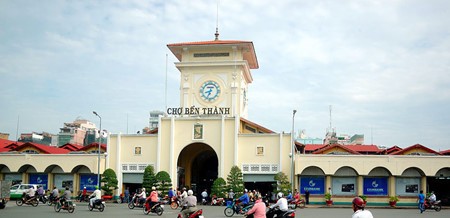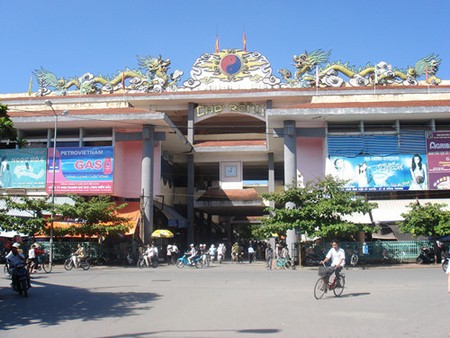(VOVworld)- Vietnamese markets come in all sizes. In the city, markets are often bigger and more crowded than in a village or commune. Each of them also has a name and a story behind it. We now explore the meaning of some Vietnamese markets' names.

Ben Thanh market in Ho Chi Minh City |
In Vietnam, a market is closely associated with the local community life. Ho Dai Phuong, who has, over the past 20 years, taken hotos of markets throughout Vietnam, said: “A market is often named after its commune or village. Sometimes, a market carries the name of its district. So, the name of a market tells its location.”
City markets often meet until midnight while in the low-land, rural, and coastal areas, market sessions take place for a short period in the early morning or late evening. In the mountain region, market sessions are periodic. For the people who live here, the markets are like festivals where they exchange goods and meet together.
In rural areas, a market can be anywhere: at the village gate, by the wharf, or under a banyan tree. Market times vary depending on the lifestyle of each region. It sometimes meets from 1 to 5 AM or late in the afternoon, at about 6PM, when it’s dark and then the market is called the hell market.
In the Mekong Delta, floating markets are popular. In some places, they were named after a local trader like Ba Chieu (Ms Chieu), Ba Diem (ms Diem), Ba Hat (ms Hat), and Ba Hom (ms Hom).

Rong (Dragon) market in Nam Dinh |
Some wholesale markets are named after the products that they sell like the Rice market or Mattress market. In HCM City, Cho Lon or Big market got its name because it is bigger than the others. There are also others called Giong Tram and Giong Tre markets because they sell cajuput and bamboo.
In northern Vietnam, some markets are called Xanh (Green) market because they sell vegetables and “Rong” or “Dragon” because they only sell shrimps and fish. Researchers say the name of the markets also reflect the agricultural culture of Vietnam. The cultural characteristics of the northern mountain region are vividly reflected in Sa Pa, Khau Vai and Bac Ha markets. Pham Gia Khanh from Hanoi visited Khau Vai love market once: “The market is not just a place to sell and buy. We heard the sound of flutes and the singing of the H’mong ethnic minority men and saw Thai girls dancing”.
Dong Xuan market in Hanoi, Ben Thanh market in HCM City, Han market in Da Nang, Buon Me in the central highlands region, Dam in Nha Trang, and Dong Ba in Hue are also famous markets in Vietnam. Their different names reflect the diverse cultural characteristics of Vietnam.